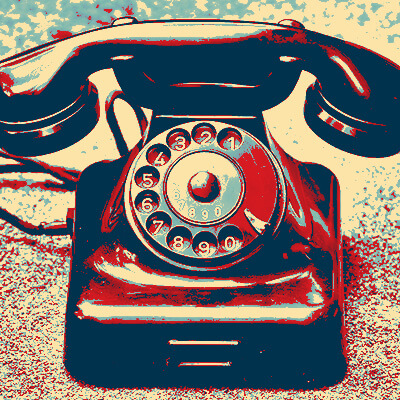The trainers are so friendly, and helpful. They certainly have lots of patience and knowledge. They make you feel so comfortable asking questions you would not dare ask your family to show you again how to do. They are always welcome in my home, sometimes I hate to see them go!
Need Help? Call Us.
877.201.3586
The Impending Ending of 3G

The Impending Ending of 3G - And What That Means for You!
We are in the midst of a landmark moment in the history of telecommunications. All around the world, countries, and organizations are officially phasing out 3G telecom networks in favor of maintaining 4G and emerging 5G networks, each one exponentially more efficient at transferring data than the last. The United States is slated to make the switch and shut down 3G in the country before the end of the year. But what does this historic technical development mean for everyday people and the way we use our devices?
Is Your Phone Safe?
Most modern phones operate on at least a 4G network, and thus will not be affected by the shutdowns. These include phones as old as the iPhone 5, HTC Evo 4G, and Samsung Galaxy S 4G (including all subsequent models). If you aren’t sure what model of phone you have, an easy rule of thumb is if it was released after 2012, it should be at least 4G compatible with very few exceptions. Any phones which are older than that threshold run the risk of losing networking when the 3G network is shut down.
Besides older phones, e-readers, and smart meters are likely to meet the same fate. Small devices aren’t the only ones affected either; in February BMW, among other auto manufacturers, notified customers who use their ConnectedDrive system to use apps and access the internet that those features were going to be totally gone due to the change.
On the other hand, some industry sectors have been able to adjust more smoothly. Home security company ADT went as far as purchasing a telecom company to upgrade their subscribers’ networks. As a result, there is not expected to be any disruption to home security for their subscribers in the foreseeable future.
When are they Shutting Down?
Each telecom company has its own self-determined schedule for drawing down its 3G support. This is in order to expand and maintain the much faster 4G/5G networks currently supported by smartphones. Here are a few of the dates for the major industry players:
- AT&T - Shutdown as of February
- T-Mobile - Shutdown planned for June
- Verizon - Shutdown planned for December
It’s possible to, if need be, switch carriers to maintain access to 3G for just a few months longer. Bear in mind that whatever you choose, 3G will be gone across all providers by the end of the 2022 calendar year.
Why are they Shutting Down?
5G networks are the “next step” in telecommunications technology (by the way, the “G” stands for “Generation”). First deployed in the United States in 2019 by Verizon, the network has multiple advantages over both 4G and 3G networks. Firstly, 5G supports many more devices on a given network, boosting cellular reception and data in crowded environments like city centers, concerts, or public venues. 5G is also much more power-efficient and can give small devices like the Apple Watch great reception without costing battery life. Finally and most importantly, 5G is 10 times faster than 4G networks, meaning loading pictures, videos and music will be noticeably more seamless and rapid. Despite these strides in capabilities, it’s worth noting that the current 4G network is not slated for decommissioning in the foreseeable future, so you can hang onto your 4G phones!
The only constant in the technology industry is change. Huge events, like the 3G shutdown or the Windows 11 launch, are often underreported and almost never explained to the people who actually use them. Now that you have an overview of the 3G situation, don’t be afraid to dive deeper! Our friendly Technology Trainers can let you know if your device is 5G compatible, whether it’s time to upgrade, and where you can get the best deals. Don’t hesitate and give us a call today at 877-201-3586!
Client Reviews
I was so pleased to find GroovyTek. Although I am pretty tech savvy in some areas there are others where I need help. GroovyTek has helped me fill in that gap of information. I made an appointment to help me sync my devices and also help me learn how to organize my photos. The trainer was knowledgeable and able to explain things very clearly.
Natalie W
Very impressed with my trainer’s ability to provide thorough explanations and demonstrations. I have confidence now in knowing how to manage my photos, videos, and documents. I received my money’s worth of valuable instruction.
Cheryl M
I think your service is great! I have used it, and I booked 2 sessions for my 83-year old husband who bought himself a new Ipad, but didn't know how to use it. He's been ill, so it was a great help that you came to the house. Thanks for the service.
Susan S
I'm very pleased with my session today with GroovyTek. My trainer was able to fix both my computer and my printer (problems with both) and instructed me on how to correct the issues if they occurred in the future. We also made plans for my next session. I find GroovyTek sessions extremely helpful and convenient since they are in my home.
Eva S
My tech from GoovyTek has been terrific. He is patient, knowledgeable, and explains things really well. I enjoyed learning new tools and features on my smart phone and computer. They have made doing things a lot easier and more enjoyable.
Jennifer H
I had a session with GroovyTek over the phone today. It was extremely helpful to me because I was able to see everything that he was doing on my computer as he was talking. I was then able to follow his actions to do what he was doing as well. What a way to go!
Carole M
A wonderful service in every aspect from calling in to set up an appointment with GroovyTek and follow ups as well as the fabulous help, patience and expertise of the tech who came to the house to work with me with my computer issues. I would highly recommend GrooveyTek for all your computer needs! Thanks so much!
Jean G
I had a serious issue with my bank website not being secure. This was a very technical problem. I used the Remote Session option to get help. My GroovyTek trainer kept at it until we finally resolved the issue.
Jeff W
Today was my first experience with GroovyTek and it was extraordinary. I learned so much over the course of the hour AND as importantly fixed the problem I was having. The trainer was intelligent and friendly. All support was given in a very collaborative way. I am looking forward to this partnership.
Barb S
It is comforting to know if you have technical problems there is a Hands On source to get help. These trainers listen to your problems, find solutions and work with you until you understand the solution, their patience is outstanding. This is a great way to not only solve problems but to learn about the ever-changing world of technology; there are class presentations, small group gatherings or one-on-one in your home with kind, friendly, people.
Ingrid S
We have had several help sessions with a GroovyTek trainer. WE could not be more pleased. My trainer takes all our questions and while answering types up his answers so even after he leaves, we can refer to his notes. I would recommend GroovyTek to any of my friends or family without hesitation. BTW, ALL the employees at this firm are extrememly knowledgeable and friendly.
Tom D
I was just delighted and on my way to practice new found skills. My trainer was on time, friendly, knowledgeable, and very patient with this little old lady (age 78). I didn't have to take notes to remember - he recorded it on his tablet and sent me a copy to download so I have my instructions, step by step. So pleased with the service and the follow-up.
Karen M
My tech is patiently bringing me (at age 79) into the computer age. I am so glad that I found him through GroovyTek. What a wonderful gift!
Judy K
Very pleased with the experience. Knowledgeable trainer who was most helpful. Highly recommend the service.








